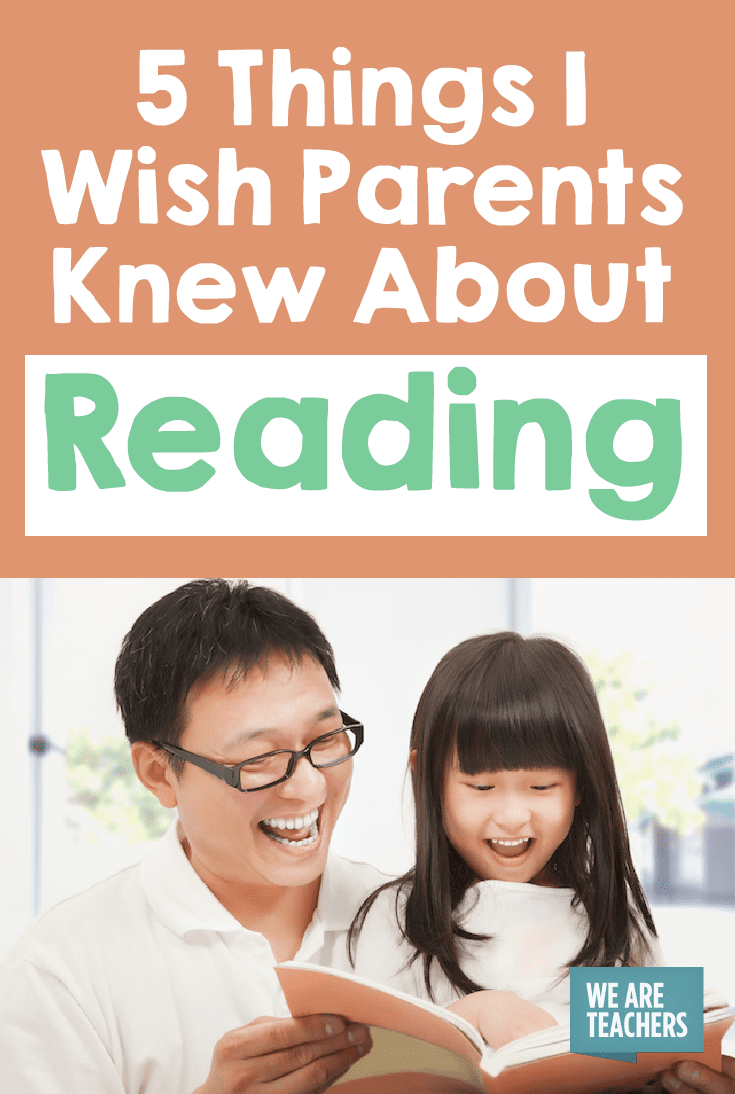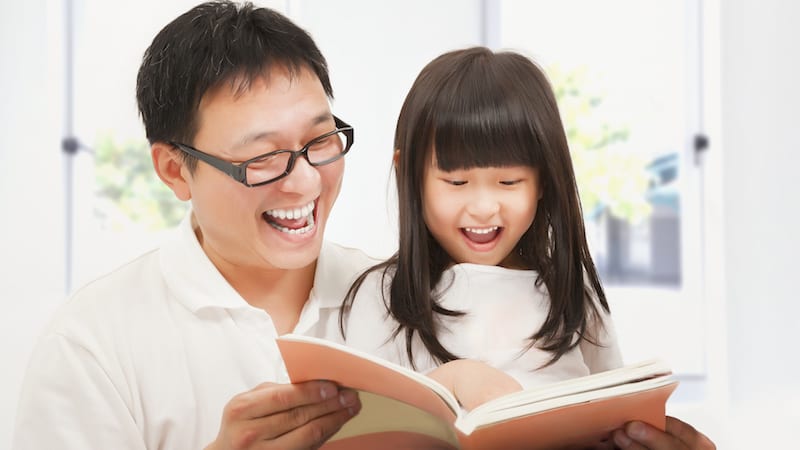I learned exactly how important reading was from my parents. They showed me with frequent trips to the library, always scrounging up money for the Scholastic book order, and, most importantly, ignoring me when they were caught up in a good book. Their “just one more chapter, and then we’ll go” or “let me finish this article before we start dinner” showed me that reading was a world that you could get wrapped up in and not want to leave.
These days, the pressure of reading levels, words per minute, and standardized testing has put a tremendous pressure on not only teachers and students, but also parents. Here are five literacy tips for parents that I wish I could share with all families:
1. This book is not too easy for your child.
Reading is making meaning not word recognition. Because accuracy is easy for us to see happening, it’s easy to assume that a reader that sounds good must be making meaning. After all, they are not doing any of the things we do as readers when we’re confused. As adults when we read a confusing text, we back up, reread, slow down, look for more information, or ask for help. Our students will spend years learning to do that. Sometimes the fluent reading we see is only surface deep or the result of multiple readings at school.
P.S. And so what if it is? I loved the Harry Potter series, and it’s definitely below my reading level. It’s okay to just love a story. That’s kind of the whole point of reading.
2. Reading levels are not a race to the top.
Oh, reading levels. Parents, I’m sorry we’ve done this to you. Understanding acquisition of literacy is difficult (it only takes a degree or two and lifelong professional development to get a handle on it), but understanding a progression of levels is easy. Parents hold onto levels because that’s all we really give them. But what does H mean to a parent? Nothing. I hope as teachers that we can replace reading levels with a discussion of reading behaviors. Fountas and Pinnell’s Literacy Continuum has an in-depth overview of every guided reading level. If you want to learn more about this, they also have an excellent article: A Level Is a Teacher’s Tool, NOT a Child’s Label. We have to change our thinking on this one before we can grow alongside parents.
P.S. A great parent tool that doesn’t cost anything is the intimate gauge you have about your child’s engagement. If they like it and want to read it, it’s the right book.
3. Pictures are there for a reason.
Please, please, please don’t cover up the pictures when reading with your child. The pictures ARE the story. Beginning readers have very little text, and the meaning comes from the pictures. When you cover the pictures, the inadvertent message is that comprehension doesn’t matter—only word accuracy has value. For our beginning readers, teaching them that they see a bunny but the word starts with “r” IS the lesson. We want them to match meaning with text, and covering up the picture takes that away.
P.S. Reading the pictures IS real reading. It helps children develop comprehension, story telling, and a love of books. Not sure about that? Read Chalk by Bill Thomson, a wordless picture book that will make you a believer.
4. You are showing your child exactly how important reading is (or is not).
Frustrated with your child’s lack of interest in reading? How are you showing that reading is important? I love the saying, “Don’t worry that children never listen to you; worry that they are always watching you.” What message do we send our children when we schedule dance classes, soccer practices, and piano lessons that can’t be missed, but a trip to the library doesn’t get the same treatment? Show your kids the value of reading by making it a priority in your time commitments.
P.S. One great way to do this is to set aside 15-30 minutes every day for a whole-house reading time. Everyone reads together as a read aloud or just in companionable silence.
5. Graphic novels ARE real books.
Yes, they are. In fact, the vocabulary is often more challenging in graphic novels because the story must be told succinctly. Let’s throw in that picture books are for all ages and stop the glorification of chapter books. Most importantly, no matter what age kiddos are, they’re never too old to curl up with their parents and read a good book.
P.S. Check out Storybird to find pictures you and your child can use when writing your own stories.
What do you think are the best literacy tips for parents? Please share in the comments, and we’ll add to this list.


